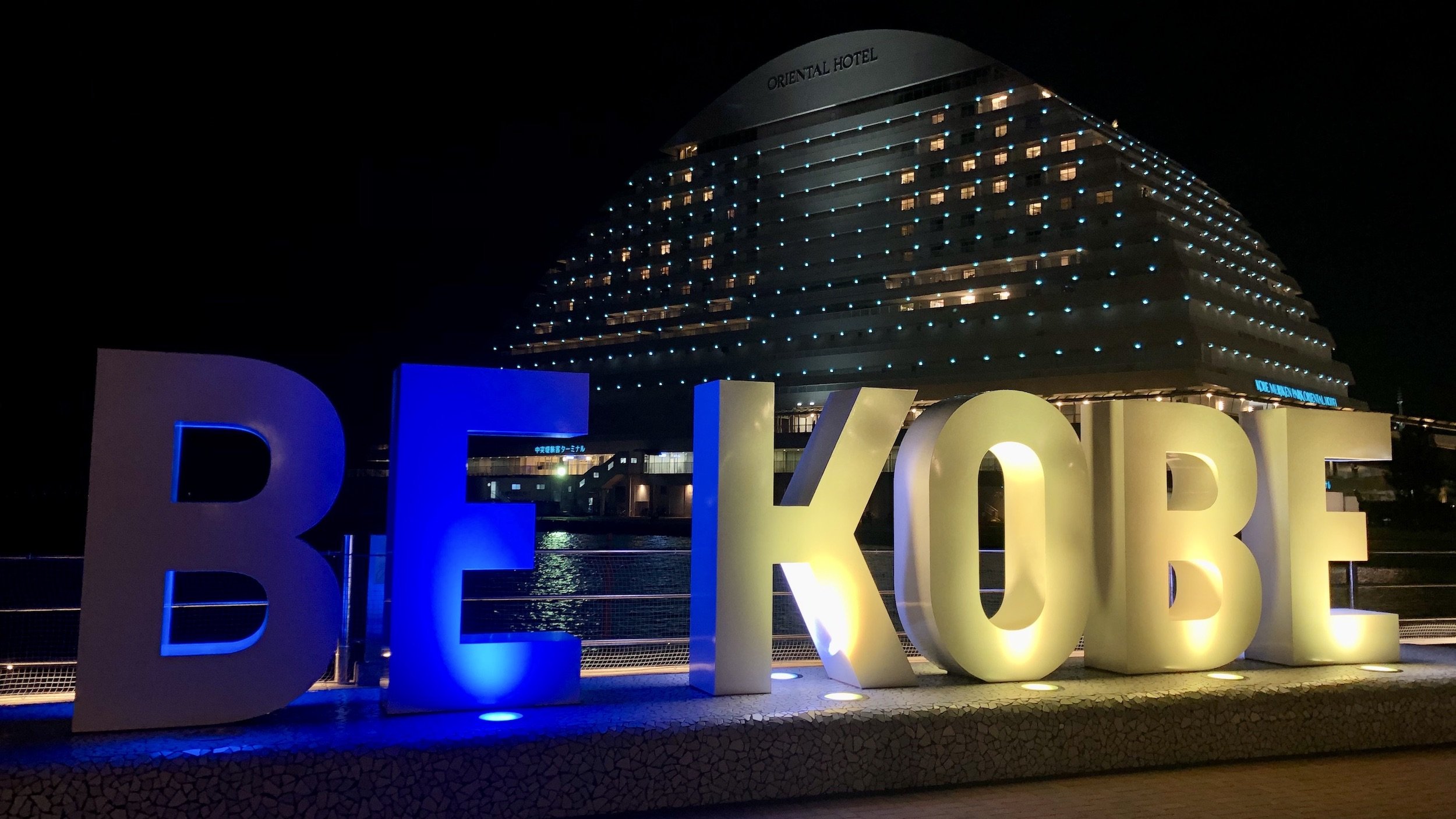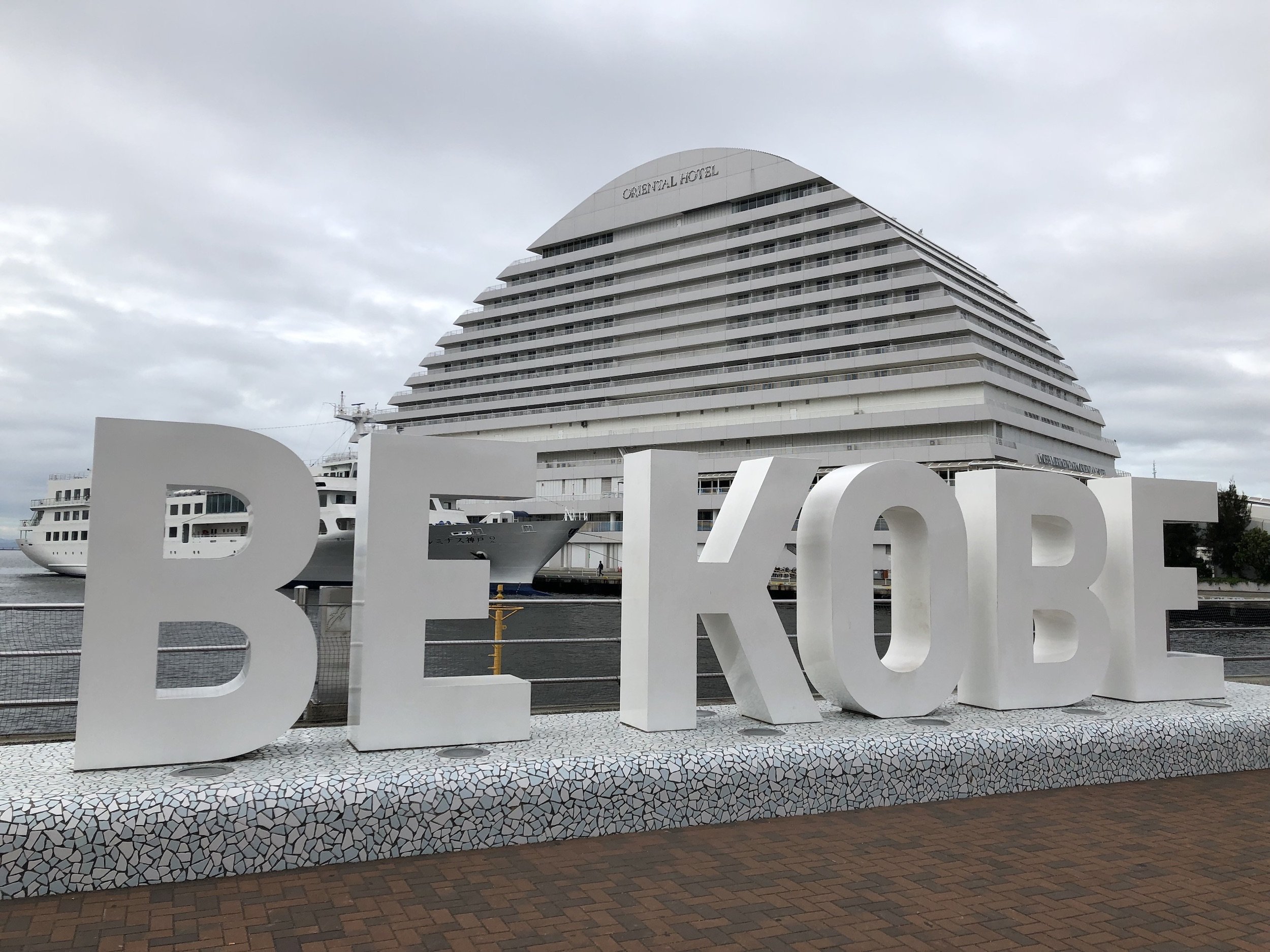In 2017, to celebrate the 150th anniversary of the port of Kobe opening, the city installed a new “Be Kobe” monument in Meriken Park. It quickly became a popular photo spot, and in recent travels, I’ve noticed a trend of other cities across Japan “going Kobe,” you might say. Everywhere you look, it’s as if there’s another city with its name in big letters against a different backdrop.
Behind the “Be Kobe” monument is the Kobe Meriken Park Oriental Hotel, which opened in 1995, months after the Great Hanshin earthquake struck. The monument is also within walking distance of the Port of Kobe Earthquake Memorial.
The Great Hanshin Earthquake and 2011 Tohoku quake
At the Port of Kobe Earthquake Memorial, part of the wharf damage from the Great Hanshin quake has been preserved. Above, you can see how that 60-meter section of damage looked in April 2011 when I first visited the memorial.
Below, you can see some subtle differences in how it looks now, over a decade later.
I was there in 2011 after the school where I was working closed for a month due to the Tohoku earthquake, usually referred to in Japan as the Higashi nihon daishinsai (Great East Japan Earthquake). We are coming up on the 12th anniversary of that quake on 3/11, which triggered a tsunami, caused three nuclear meltdowns, and was the strongest quake ever recorded in national history.
It left Tohoku devastated and shook my school building in Tokyo hard enough that the windows cracked, and I honestly thought it was going to cause a collapse. However, while we did experience rolling blackouts in the capital, and lights around the city went dark and fountains ran dry to conserve power afterward, the city of Sendai and Tohoku region got the worst of it, unfortunately. The most damage I recall hearing about here was a bent antenna on top of Tokyo Tower.
When the Great Hanshin quake hit on January 17, 1995, its epicenter was on Awaji Island, right near Kobe, a city with a population of 1.5 million at the time. This made it one of Japan’s deadliest 20th-century earthquakes, second only to the Great Kanto quake of 1923, which is coming up on its own 100th anniversary on September 1.
To this day, earthquake drills still happen in Japanese schools on September 1 as part of Bosai no hi (Disaster Prevention Day). And of course, it’s impossible to talk about earthquakes in 2023 without thinking of the deadly one that just hit Turkey and Syria last month.
The Meaning of ‘Be Kobe’
While the “Be Kobe” monument debuted in 2017, it was born out of a project that began in 2015, 20 years after the Great Hanshin (or Great Hanshin-Awaji) earthquake. According to the “Be Kobe” website, this project involved workshops and interviews with local citizens who lived through the quake, which helped the city come up with a civic pride message to convey their shared experience to the world. The result was the “Be Kobe” slogan, which is meant to express, “Among all the charms of Kobe, the greatest attraction is its people.”
Hanshin is an umbrella term for Kobe, Osaka, and the surrounding area. We paired a night in Kobe with one of our recent trips to Osaka, staying at the Kobe Meriken Park Oriental Hotel, which I might write about sometime in a separate post. The hotel itself is designed to look like an ocean wave; you’ll often see a big international cruise ship docked next to it on Meriken Hatoba (American Wharf). The Oriental Hotels site calls this wharf “the birthplace of the port city of Kobe.”
For its part, the “Be Kobe” monument seems to have also been the birthplace of a new trend, with city names popping up against scenic backdrops all across Japan. Above, you can see similar signs we’ve spotted since last summer in Aomori, Tokyo, Tottori, and Osaka.














